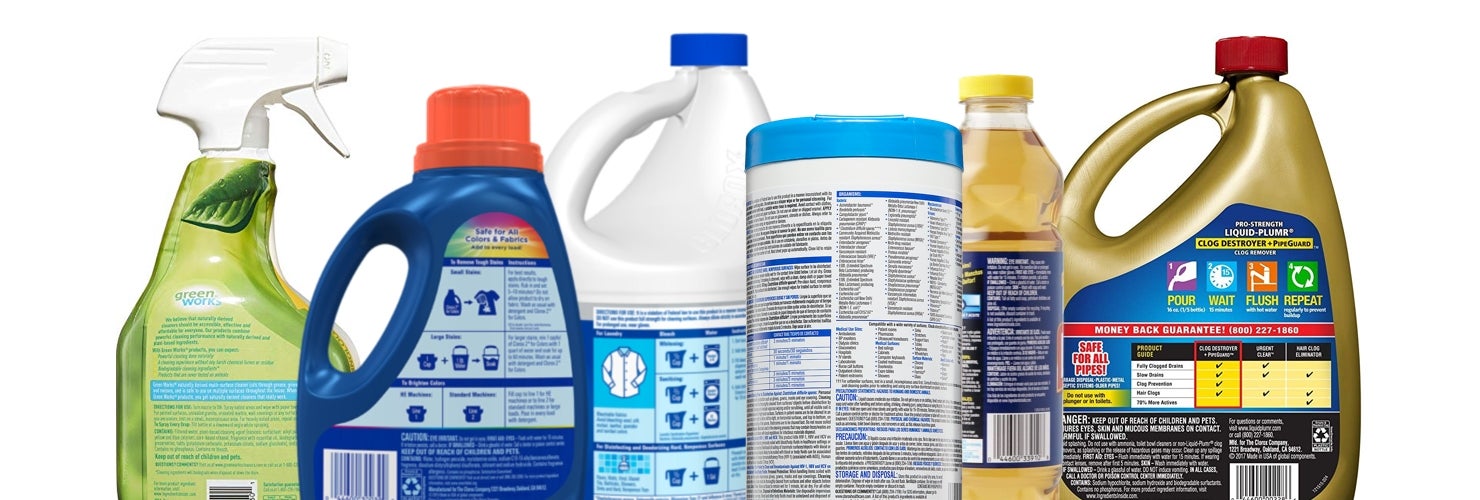On the Front Lines of Ingredient Transparency
By Lisa Pankiewicz, Vice President – Global Stewardship, The Clorox Company

My experience as a technical leader within the cosmetics industry — where I spent most of my career — shaped my perspectives on ingredient transparency.
During this time, I witnessed first-hand an evolution that brought greater consumer demand for detailed ingredient disclosure. Since makeup, fragrances and other personal care products are used directly on the skin, my companies were some of the first to see those preferences shifting.
Now that I oversee regulatory, safety and scientific compliance activities for a consumer packaged goods (CPG) company, I have to consider our approach to ingredient disclosure for a diverse portfolio that includes not only natural personal care products but also food; vitamins, minerals and supplements; and what we’re best known for, our cleaning products.
Under federal law, food and cosmetics products have been required to disclose ingredients for more than 50 years, but cleaning products have not had a similar requirement — until now. As we usher in a new year, certain provisions of California’s Cleaning Product Right to Know Act are taking effect. Signed into law in 2017, it requires manufacturers of cleaning products to disclose certain ingredient information for their products online by Jan. 1, 2020 and on their product labels by Jan. 1, 2021.
Although there hadn’t been a requirement to disclose ingredients in cleaning products, I’m proud that The Clorox Company has been on the front lines of ingredient transparency. A decade ago, we became the first major CPG company to voluntarily disclose ingredients in our U.S. and Canadian consumer and professional cleaning, disinfecting and laundry products. Over the years, we expanded our Ingredients Inside program to include fragrance components identified as potential allergens as well as other information.
Today, we’ve transitioned our U.S. products over to the industry portal SmartLabel, not only complying with the California law but going beyond its requirements. On SmartLabel, users will find ingredient information as well as things like directions for use, advisories and safety data sheets. Spanish translations, which we offered on Ingredients Inside, also will be available soon on SmartLabel. And we’ve announced our commitment to voluntarily list ingredients on the labels of our household disinfecting products, which are exempt from the law. During the past several months, we’ve been working with the Environmental Protection Agency, which must approve those changes, to create a pathway for ingredient disclosure that will provide consumers with access to this information in a consistent way across the full spectrum of our retail cleaning products.
Another way we’ve gone beyond compliance involves fragrance disclosure. We’ve spent the past year working with the Fragrance Creators Association — a trade group representing manufacturers of fragrances and fragrance products, including our industry peers — to develop a comprehensive resource on fragrances and their ingredients, with information on their benefits, safety profiles, sustainability and more. Those reviewing product ingredients on SmartLabel will now be able to link directly to specific listings available on The Fragrance Conservatory, which launched in mid-December.
To make the transition as seamless as possible, we have new and improved navigation on our corporate website, ensuring you’re just a click away from ingredient listings for U.S. products on SmartLabel or for Canadian products, which remain available on Ingredients Inside.
In anticipation of ever-expanding consumer expectations, we’ve already committed to doing more under our new IGNITE strategy, launched in fall 2019. As part of our environmental, social and governance goals, we’re focusing on two areas: 1) ingredient management; and 2) transparency. Within ingredient management, this year we’ll kick off our work to reduce the chemical footprint of our cleaning products. In addition, we’ll establish and publish a list of ingredients that will be restricted from use in our domestic household cleaning products. To increase our transparency, we’ll be increasing the reach of the SmartLabel tool and expanding the scope of consumer-meaningful information. We’ll also be aggressively increasing our third-party product certifications by 2025.
At Clorox, we’ll continue to be on the front lines of ingredient transparency — and not just because it’s required or because it’s good for business. We’ll also be there because it’s consistent with one of our longest-held values: to do the right thing.

Lisa Pankiewicz




